The Many Uses of Cargo Netting in Zoos, Playgrounds and Parks
Note: This article is for informational purposes. US Netting does not work on projects directly dealing with children due to liability reasons.
The most typical use for cargo netting – well, at least up until the last 10 years or so – has been to contain products during transport and to safely lift cargo before and after shipment. But, with the ingenuity of a whole new generation, cargo netting is taking on a more amazing and amusing role— from backyards to zoos.
Netting in a variety of colors created in circular patterns covered this play area at one of the most eclectic and popular National Parks in the world. This one is located in Japan but others are making similar appearance around the U.S.
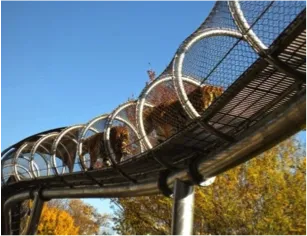
For instance, the Oakland Zoo installed an enrichment project made from cargo netting for their McCaw exhibit after the zoologists realized that the birds needed more stimulation to prevent a variety of illnesses.
But, we’ve got to hand it to the Philadelphia Zoo for the most innovative and unusual use of cargo netting for both animals and visitors! The “lion run” enclosed with Kevlar™ cargo net-ting allows the lions to roam freely one area of their sector to another above the heads of visi-tors while Pandas have fun on the cargo net climbing toy.
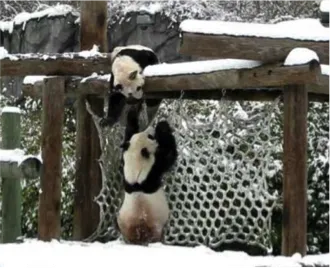
The Lexington Zoo advertises its “Zip the Zoo” as part of the experience and includes this netted tunnel for visitors to use to traverse areas in the zoo.
Cargo netting in zoos has become a huge hit with handlers, visitors and the animals alike.
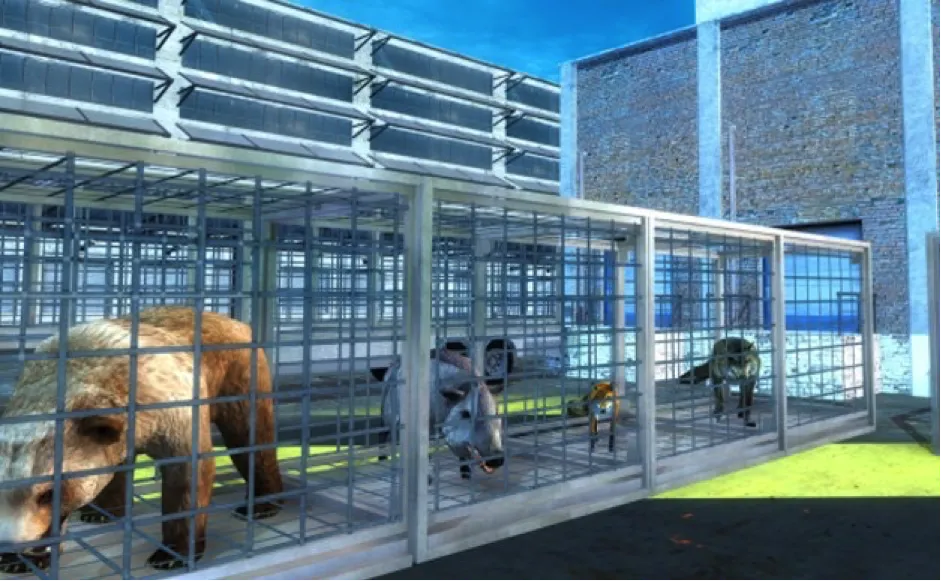
Use of Cargo Netting in Cages?
You may not know that one of the newest uses for cargo netting includes cages for transporting zoo animals from one point to another. It allows animals to be separated safely and the problems of broken teeth, feet, nails and other accidents caused by hard bars on cages is drastically reduced.
The project in the left is one completed at a Museum in Philadelphia that needed to find a way to increase their attendance records.
Since netting doesn’t cause injuries to those who fall onto it, it’s an ideal application for kids to use as play areas in the sky. U.S. Netting is able to fabricate netting to the size and shape to fit your requirements. Plus, it also includes installation hardware to ensure that it will meet specifications for performance.
Cargo Netting for Public Parks and Playgrounds
Using netting for play areas is not limited to commercial ventures.
Public parks in cities and towns around the country are installing netting solutions on their playgrounds because it lowers their liability insurance costs due to safety factors.
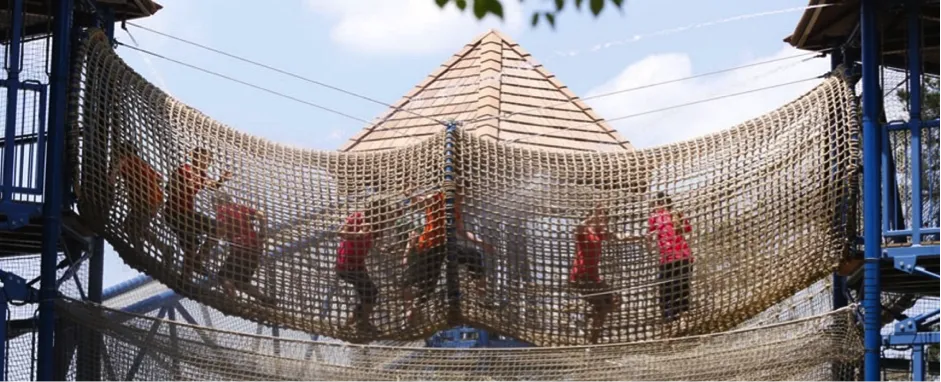
Malls around the world use rope net jungle gyms to entertain the kids and keep the parents in the shopping zone for longer periods of time. Unlike the play areas where parents have to pay for the kids to have fun, these spaces are free and located near eating bars for parents to relax and get some nourishment while the kids release excess energy.
Landing platforms provide parents a method of reaching any child that suddenly gets cold feet, although the entire play zone is enclosed to prevent falls.
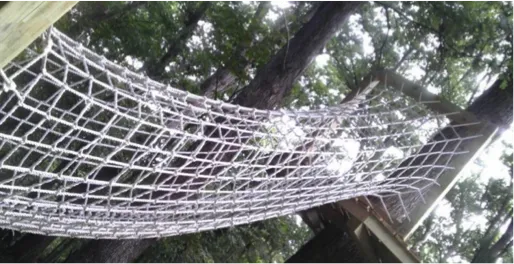
Cargo Netting Play Areas for Home Owners
Home designers are incorporating cargo netting for play areas such as the one around the castle-style tree house (below) and for climbing structures ranging from simple to the elaborate that are much safer than climbing walls— especially for young children.
Because cargo netting is available in either natural fibers (Manila rope) or man-made filaments, the customer can choose the most suitable fabrication for any project.
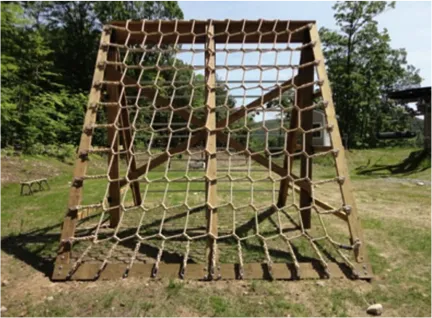
The military has used cargo nets in their obstacle courses for years. And now this same design is being used in competitions around the world where adults challenge each other in fitness races.
Typical Uses for Cargo Nets
Well, let’s say that the purposes and places where cargo netting is making an appearance these days is just about anywhere your imagination chooses to place it. And, where can you get the perfect netting for whatever you dreamed up? U.S. Netting, of course!
We can help you design the structure that you vaguely imagine and pop it into reality. All you have to do is contact us by email at [email protected] or by phone at 800-331-2973 and we’ll be happy to answer any and all of your questions.






